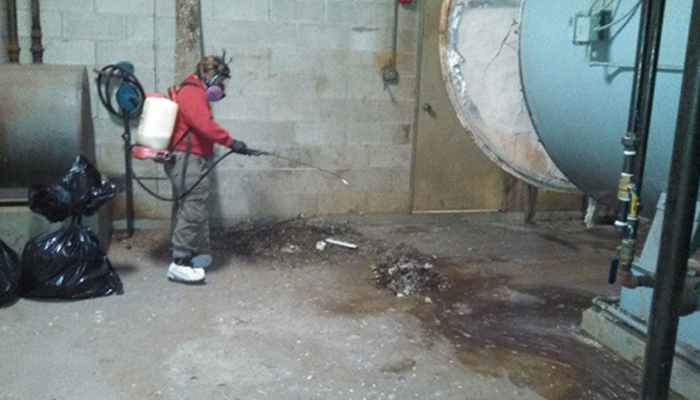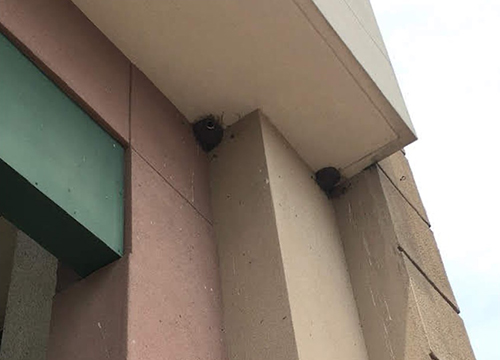How to Protect Buildings from Bird Droppings
Jun 13, 2023
Amid the tangle of concrete and densely packed structures that define city centers and suburbs, birds offer a welcome touch of wilderness. Unfortunately, the waste they leave behind is a less pleasant reminder of the natural world.
Birds – including pigeons, swallows and herring gulls – often blanket the structures they loaf, roost and nest on in droppings. When those droppings accumulate on building facades, roofs and ventilation systems, it is not only unsightly – it’s a health and safety risk.
The Damage Droppings Cause
Structural Damage
Birds have highly acidic droppings.
The uric acid in their waste has the power to slowly corrode the materials used to construct vehicles, support structures, rooftops and more. The acid in bird droppings is so powerful, in fact, that it can destroy entire vinyl rooftops.
To make matters worse, droppings can be difficult and costly to clean thoroughly. They penetrate deeply into structures and adhere resolutely to walls and sidewalks. It can take hours of manpower to scrub surfaces clean.

Health Risks
Bird droppings contain pathogens that can threaten human health.
One of the most harmful of these pathogens is histoplasma, a fungus often found in soil where bird droppings accumulate. Prolonged exposure to histoplasma can cause histoplasmosis, a lung infection that can be serious.
Other diseases that can be spread through bird droppings include salmonella, E.coli and the bird flu.
Slipping Hazards
When birds droppings are left to accumulate on sidewalks or other walkways, the risk of slipping does exist.
It is not uncommon for birds to roost or nest – and therefore, deposit waste – near highly trafficked areas including doors and train platforms.

Swallow nests are often tucked out of sight and drop debris on the ground below.
How to Keep Birds Away from Buildings
To reduce the risk of liability, health risks and structural damage, birds must be deterred and excluded.
Two of the most common – and effective – forms of exclusion are netting and bird spikes. These solutions physically bar birds from landing, roosting and nesting on structures. Depending on the season, species and building design, other solutions may be more appropriate.
The experts at Wild Goose Chase can help you determine the right-fit solution. Our biologist-led team has decades of experience resolving a range of bird conflicts with safe, effective and humane solutions.
If you struggle to control birds and their waste on your commercial or residential property, contact a member of the Wild Goose Chase team to schedule a site evaluation and learn more about exclusion and deterrent systems.




 0
0
